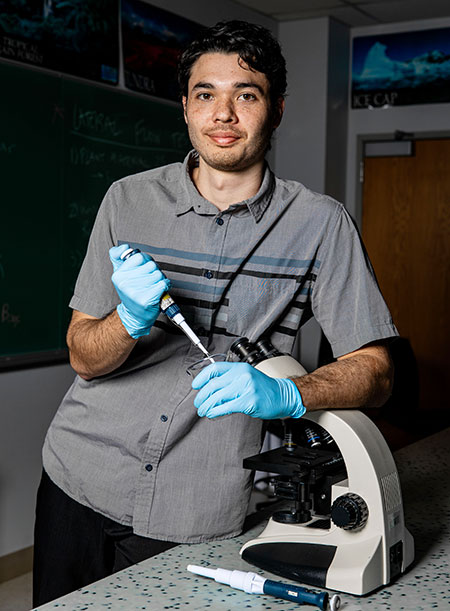Combating Greenhouse Gases One Burp At A Time
 As scientists continue to study climate change and the alarming increases in greenhouse gases in the environment, a closer eye is being turned to the livestock industry.
As scientists continue to study climate change and the alarming increases in greenhouse gases in the environment, a closer eye is being turned to the livestock industry.
A key part of food supplies around the world, livestock manure or gastroenteric releases account for about 32% of human-caused methane emissions, according to estimates by the United Nations Environment Programme. The World Resources Institute estimates that the demand for livestock will increase by 56% by 2050.
“Climate change is a wide-scale issue that we face today, and we’re looking for new and innovative solutions to these complex problems,” said Duncan Anderson ’24, an environmental biology major at Pacific University. “Cattle are the No. 1 agricultural source of greenhouse gases worldwide and the global demand for livestock is set to double.”
For the last two years, Anderson’s undergraduate research has aided a Hawaiʻi-based company, Blue Ocean Barns, in its quest to cultivate a type of red algae that has shown effectiveness in reducing methane emissions from livestock. Known by the scientific name Asparagopsis taxiformis, the algae has shown potential in scientific studies to reduce methane emissions from cows by as much as 99%.
Blue Ocean Barns uses the algae to produce a proprietary feed supplement, Brominata. Anderson’s senior capstone project looked into the contaminants found in Blue Ocean Barns’ algae, helping to develop an identification system for the contaminants and non-target biological organisms, providing colleagues with a valuable resource to detect and address potential contaminants.
The research revealed many different contaminants in the Blue Ocean Barns filtration system, with the most prominent being plastic microfibers and non-target species.
“Contaminants can decrease photosynthesis in the algae and decrease the growth levels,” Anderson said. “With these studies, we are looking to remove the microplastics, the rocks and the different algal pieces to create the best opportunity to grow.”
Born and raised on the island of Hawaiʻi, Anderson found Blue Ocean Barns two years ago through a posted job opportunity at the company’s offices in Kailua-Kona. The job proved to be a perfect connection between his interest in studying microplastics and the opportunity to put it to use in the environmental science field.
While most students find research opportunities through their work with Pacific faculty, Anderson’s project took the opposite route. He brought his opportunity from Hawaiʻi to campus. His professors have provided nothing but support.
“I originally brought it up to Rich Van Buskirk, my advisor, and he thought it was the perfect opportunity,” Anderson said. “I was looking for something I could do in Oregon, but he said ‘Why don’t you work back home?’ I took the opportunity and ran with it.”
Blue Ocean Barns hopes to expand its algae production from its current four-acre facility to enough capacity to cover a space the size of Chicago’s O’Hare International Airport. Upon graduation in May, Anderson hopes that he can join the company’s efforts full-time.
It’s a great opportunity to play a small role in combating one of the world’s largest problems.
“The earth is warming, sea levels are rising, and cattle are one of the biggest contributors to this,” Anderson said. “With what we are doing, we have the potential to decrease emissions dramatically.”


